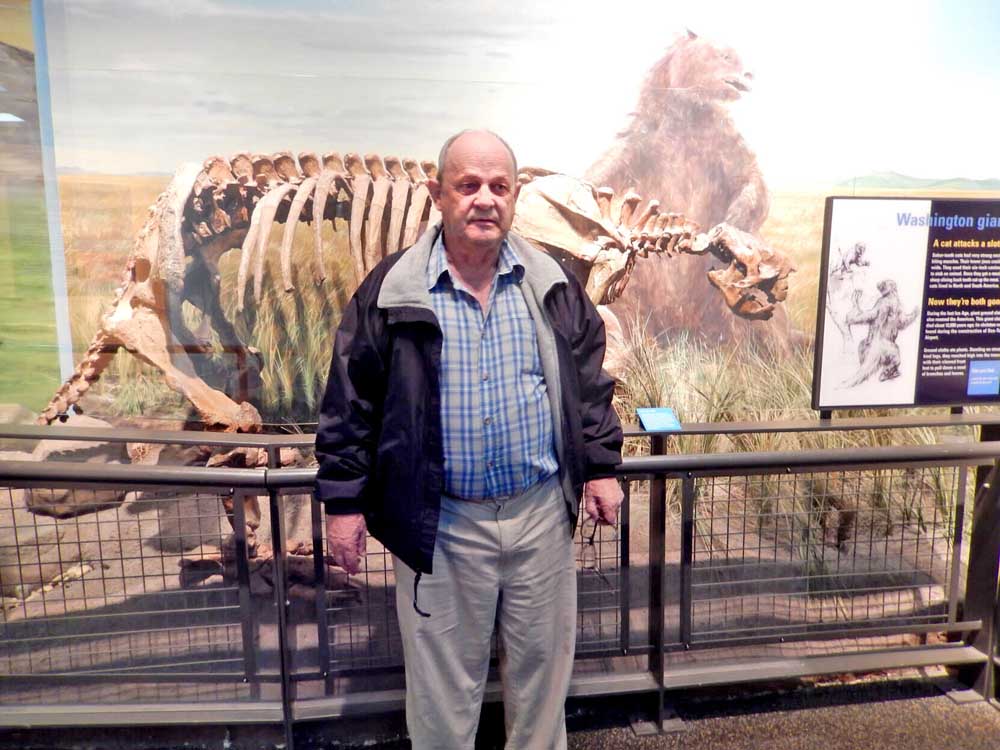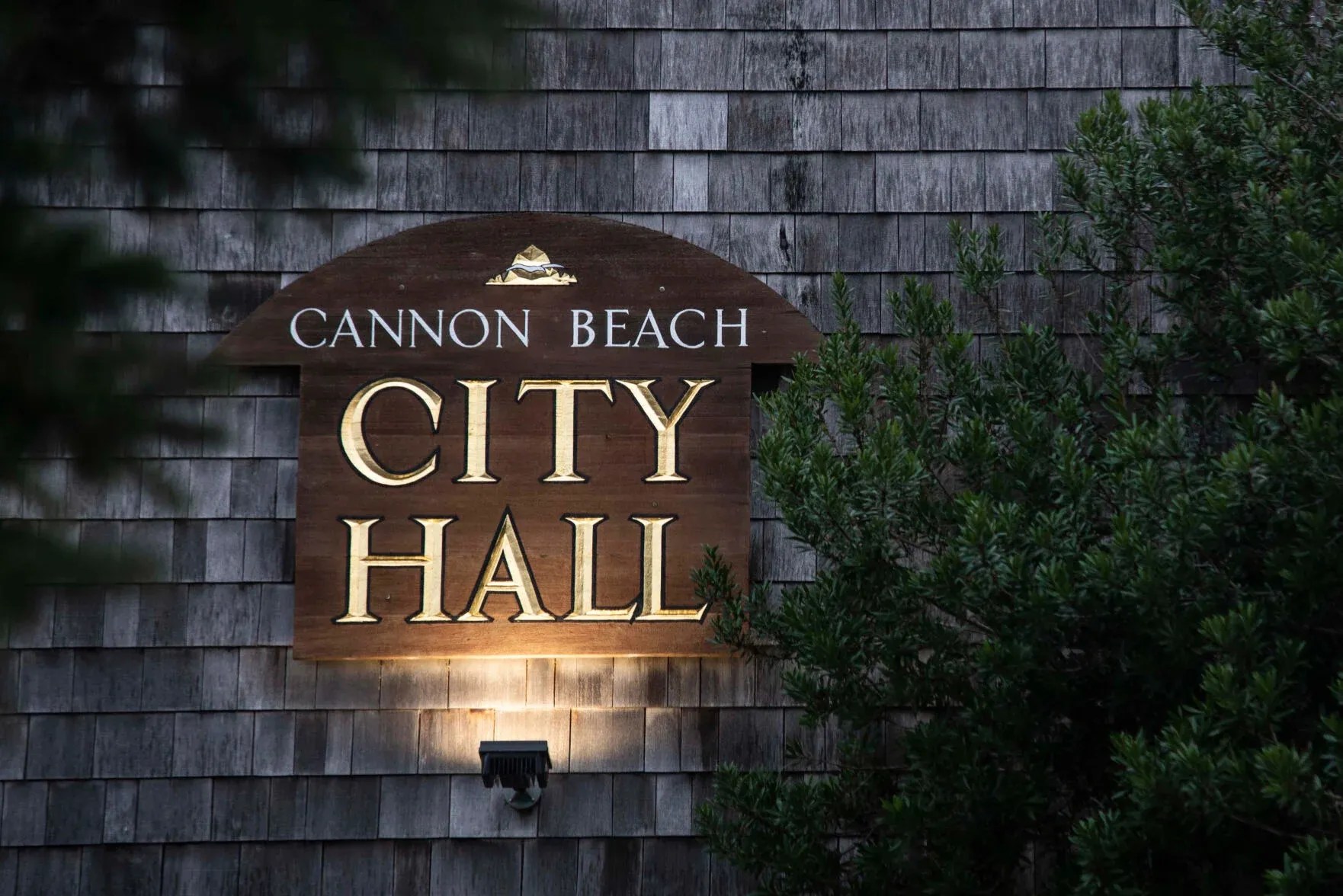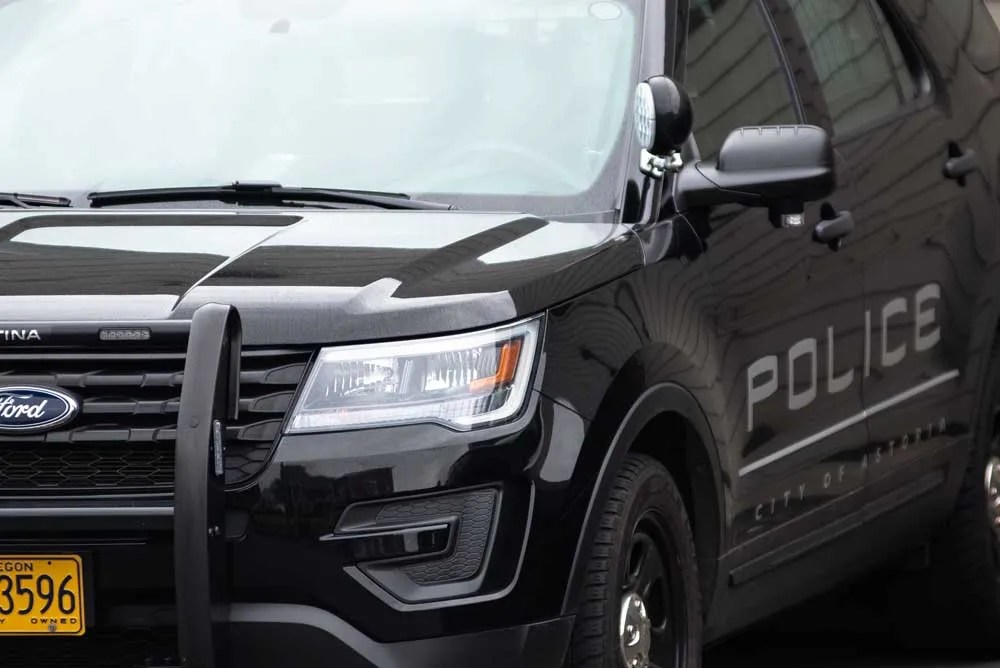Giant fossil named for Ilwaco grad
Published 8:50 pm Tuesday, March 22, 2022

- Gordon ‘Gordy’ Simmons, of Skamokawa, is pictured at the Burke Museum in Seattle with the fossil of the giant sloth.
SEATTLE — Gordon “Gordy” Simmons has achieved an honor few can match.
The Skamokawa resident has had a fossil named for him.
“Gordy” is the name bestowed by the Burke Museum in Seattle on the skeleton of an extinct giant ground sloth.
Simmons discovered the remains of the beast in 1961 while working on expansion of the Seattle-Tacoma International Airport.
And more than 60 years later, he never tires of telling the story.
He and his crew were trying to cement in a fourth light tower on the new runway when they encountered an obstruction. “We couldn’t get the tower in and out popped a bone,” he said. “I thought at first it was a cow bone, but it would have had to be a pretty big cow!”
He knew immediately it was unusual. “Better call the university — we’ve got a dinosaur down here!” he told his crew. “The guys were mad at me because we lost three days’ work! We thought it was a bison, then saw the claw.”
As is common on construction sites, when bones are found work stops in case there is a need to investigate human foul play or figure out any archaeological significance.
It was the latter that had staff at the Burke Museum celebrating.
Simmons had discovered the skeleton of what turned out to be an extinct giant ground sloth. The creature, Megalonyx jeffersonii, likely roamed the area 12,000 years before the first Starbucks. It gets its name from Thomas Jefferson, who, before he was president, wrote a scientific paper in 1797 about a similar find in a western Virginia cave, erroneously thinking it a tiger-like cat. In fact, the sloths were herbivores which evolved from creatures in South America.
It is among prized exhibits at the museum, which adjoins the campus of the University of Washington in northeast Seattle. The fossil has been on display since 1977, but it was only recently that museum staff decided to officially name it.
“Gordy” was the inevitable choice.
‘Amazing’
Greg Wilson Mantilla, curator of vertebrate paleontology at the Burke, conceded that it is not common to name exhibits. “But there are some fossils that are either so complete or important that they are beloved and you find yourself wanting to identify them more intimately,” he said.
“Really this fossil is one of my favorite fossils in the museum. It captures so many interesting stories about our region.”
He noted that its modern discovery and the link with Jefferson — even though his conclusions were erroneous — make it a memorable artifact.
“And it is very, very complete for a fossil. Usually we only get a few bones here and there, but this thing is 90-some percent complete, only missing the skull that was destroyed in the discovery.
“When I have guests, or do a tour, I always stop there and connect people to this amazing prehistory and recent history.”
Simmons attended Ilwaco High School, where he had four years’ success in football and excelled in track, earning kudos for long jump and sprints. He married his high school sweetheart, Irene, and they had five children who all still live in Washington state, plus nine grandchildren and four great grandchildren.
After he graduated with the Class of 1954, he spent a year studying at Grays Harbor while Irene completed her senior year, and then they were married. His career took him to the greater Seattle area, which boomed with the Century 21 Exposition of 1962 and construction of landmarks, including roads and bridges that shaped today’s city. He recalls watching construction of the Space Needle, although that was not one of his projects.
Now 87 and retired in Skamokawa, he treasures memories of his Ilwaco days, growing up in a house near the city ball field, and later the tale of his dramatic fossil find.
Daughter Dianna Johnson, who lives in Kirkland, remembers growing up with the family legend. “He has talked about this several times over the course of my life,” she said. “He is great at telling stories and there are so many wonderful tidbits about this.”
Having the fossil named for him had significance. “That was one of his dreams,” she said. “It meant so much to him.”
‘Claws’
A carefully researched article by David. B. Williams published in 2010 on the Seattle-based history website www.historylink.org highlighted how Simmons, then working for the Sellen Construction Co., spotted the bones sticking out of a recently excavated 14-foot-deep hole dug for an anchor for a lighting tower.
Museum experts dug and discovered a significant portion of the skeleton — but no intact head. A plaster skull was added to the real bones to give the museum display more visual impact. The pelvis, which was recovered, was reported to be 45 inches wide, but scientists have not established its gender.
Williams quoted a Seattle Times story in which Howard A. Coombs, chairman of the University of Washington geology department, commented about its condition. “You can even see the tiny scars left by muscles,” Coombs told the newspaper. “All we have to do to clean them is to put them under the faucet. Usually you have to chip old bones out of hardened soil.”
Williams’ article highlighted how the creatures lived in a period that followed the last ice age. “A post-glacial habitat of forests, lakes and bogs provided a diverse food supply for large herbivores such as giant ground sloths,” he wrote. “They chewed twigs and leaves with short and stout grinding teeth. They could have used their large claws for hooking branches or possibly for defense.”
The museum has 73,000 fossils in its collection, gathered from all seven continents, including mammals, birds, dinosaurs, reptiles, amphibians and fish. Its staff posted about the sloth on its Facebook page on Valentine’s Day in February, the anniversary of the find in 1961.
Simmons recalled it was a while before he saw the exhibit displaying his fossil at its full height. Originally, it wasn’t displayed as an 11-foot tall beast. “When I did get to see it I thought, ‘Gee, what a deal!’ It looks like a big deer, except it has a claw.”
His conversations with staff, when he revealed he believed he was the only surviving member of the crew that found the bones, led to close links with the museum and eventually the naming decision.
“It’s going to be there forever,” Simmons said. “But that’s not my greatest achievement in this world. Marrying my wife was. We have been married 66 years. What a wonderful time we have had all these years.”





